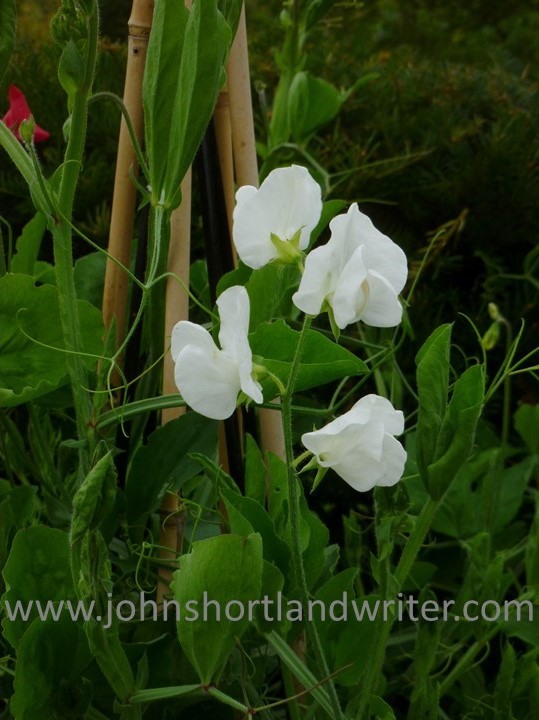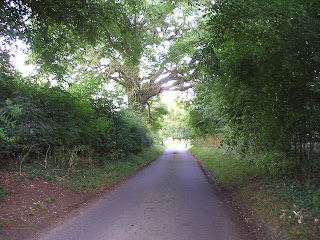Growing Sweet Peas - the lazy person's guide
Imagine it is mid-summer, the morning sun is warming the day and you are gathering handfuls of pretty, multi-coloured and fragrant flowers to bring back into the house. If this sounds like a heavenly dream then read on. The dedicated gardener will need no further encouragement to grow sweet peas but for those less keen on gardening or with little time, they are still the perfect choice.
So, even if your idea of gardening is to sit in it with a glass of chilled, white wine, there is a quick and easy way to grow sweet peas for, at this time of year, pots of young seedlings are available from garden centres. They are usually grown in a single pot with a dozen or more plantlets crowded together. They nearly always come as a mix of colours but it is necessary to check that they are a tall-growing and scented variety. Avoid buying the scentless and/or dwarf types, both of which I dislike intensely – why grow these when they should be fragrant and elegant?

Sweet peas grown informally on a ‘wigwam’ in the garden border
If the weather is reasonable and the soil not frozen, the seedlings can be tipped out of their pot, teased gently apart and popped in the ground about six inches (15cms) apart. It is beneficial to make sure that the soil in the pot is moist so give them a good drink an hour or so before planting. Sweet peas, being climbers, need something to clamber up: the traditional way are hazel sticks. These are ideal for the sweet peas attach themselves readily to the rough and twiggy stems. If hazel cannot be found, bamboo canes also work well although the young plants may need a little helping hand at first to attach themselves – use any short twigs for this just to prop them up. The canes, which are traditionally placed into a circular ‘wigwam’, need to be about 7-8ft long so that once in the ground they are about 6ft tall. Apart from keeping them watered in dry spells and free from slugs and snails that’s it. They will begin to flower in June and continue (providing you pick them regularly and never allow them to set seed) until the autumn frosts. Incidentally, they grow well up fences too providing they get adequate sunshine.

For more experienced gardeners and those that want to enter the local flower show try growing them as ‘cordons’. With this method they are grown in straight rows on bamboo canes or strings to a height of 5ft. A place in the vegetable garden is ideal as they can be readily accessed from all angles without treading on other plants. The spacing is again six inches apart. For the best blooms, remove the tendrils and any side shoots as they appear, also any flower stems with less than four flower buds. With no tendrils for self-clinging it will be necessary to tie the plants to the stakes with string or by using metal rings sold especially for the purpose. When the plants reach the top of the canes and/or the flower quality diminishes, cut the plants free of their stakes and lay them carefully along the ground. Tie in the growing tips to their nearest stake and train as before. The plants will flourish having been given a new lease of life.

These sweet peas, grown as cordons, are now ready for layering

The layering process
Sweet peas are readily grown from seed, either sown in pots or the ground in March/April or in pots in October. I prefer to start them in individual pots regardless of the time of year and to protect them from the worst of any cold weather. The seed does have a hard coating and many gardening books advise chipping the individual seeds with a knife. Not only is this hard work and time consuming, I have never found it to be necessary. The seed is both plentiful and inexpensive and if a few don’t germinate does it really matter that much?
The growing and exhibiting of sweet peas reached a peak in late Victorian and Edwardian times with many specialist clubs holding shows. With patience and luck, who knows you may become a medal winner at your local flower show? Even if you don’t, you’ll be rewarded by a garden full of colour and a house full of scent.

There is lots more no-nonsense advice for gardeners in my book “Why Can’t My Garden Look Like That?” To take a peek inside the covers, click here.


Comments
Post a Comment